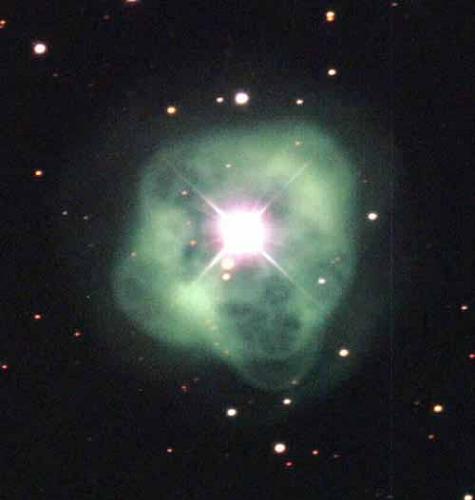Tammy Plotner and Jeff Barber, Universe Today

This time we continue the study of the dark sky. Tonight we will explore the planetary nebula NGC 1514 in the constellation Taurus. It can be located in a strip two fingers' width southeast of Zeta Persai.
Planetary nebulae were identified as such by William Herschel in 1785. Previously they were simply considered nebulae. They were thought to be composed of stars, but now we know that planetary nebulae are formed from material created by a single star. Many of them have distinguishable rings of one kind or another. Another nebula, M1 we observed on January 23rd is an irregularly shaped supernova remnant. The material of NGC 1514 slowly boils and evaporates over time. The nebula was not caused by a violent eruption.
It will be very difficult to find the neutron star at the center of M1 but almost any telescope can locate the central star of 1514. It is a magnitude 10 star, which is the fuel star of the nebula as it continuously emits gases to add material to the nebular mantle.
Because it is so bright it can overwhelm the eye. This makes NGC 1514 similar to the twinkling planetary nebula - NGC 6826 in the Cygnus group
. .
https://www.hayadan.org.il/BuildaGate4/general2/data_card.php?Cat=~~~379685779~~~261&SiteName=hayadan
